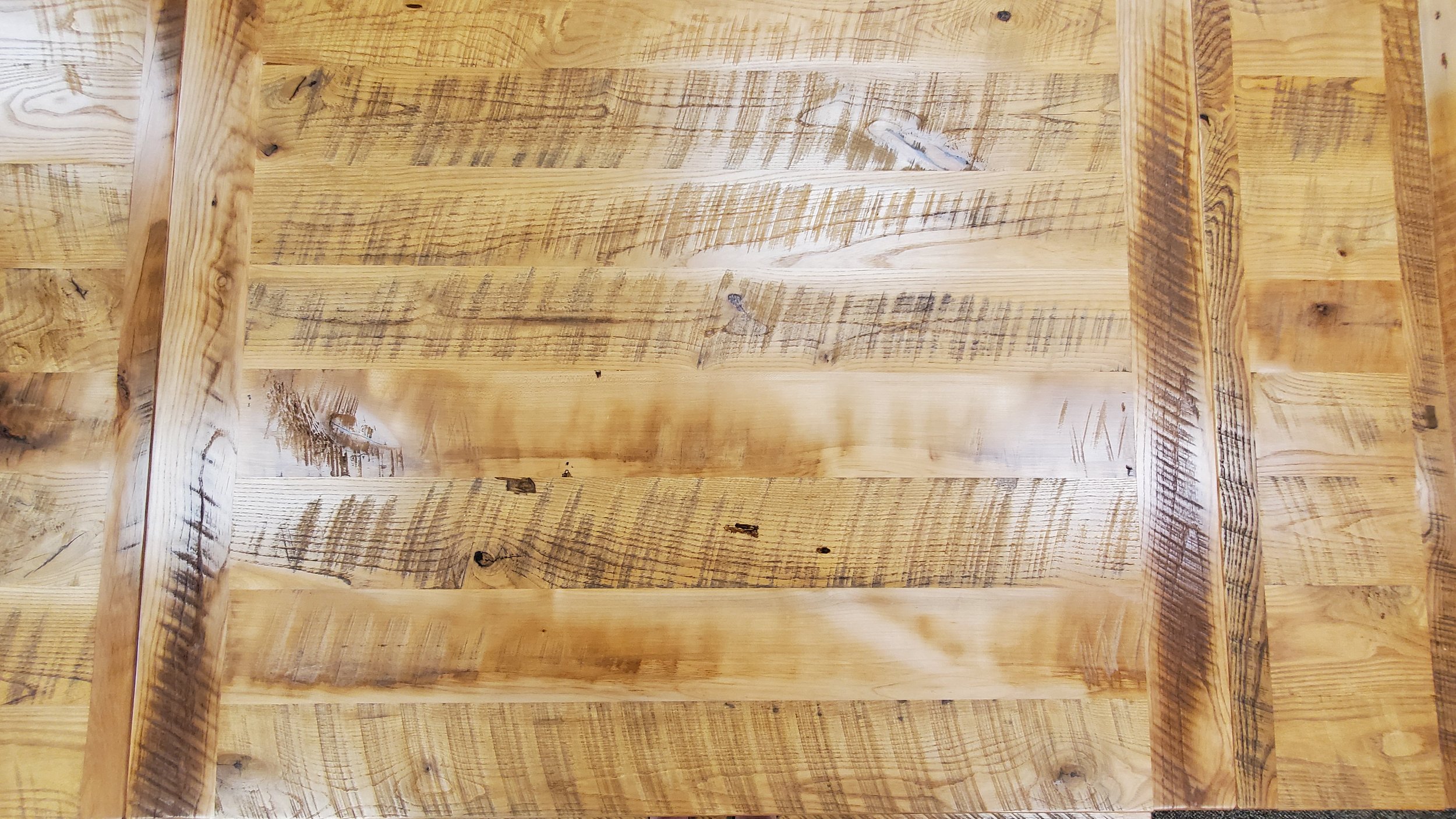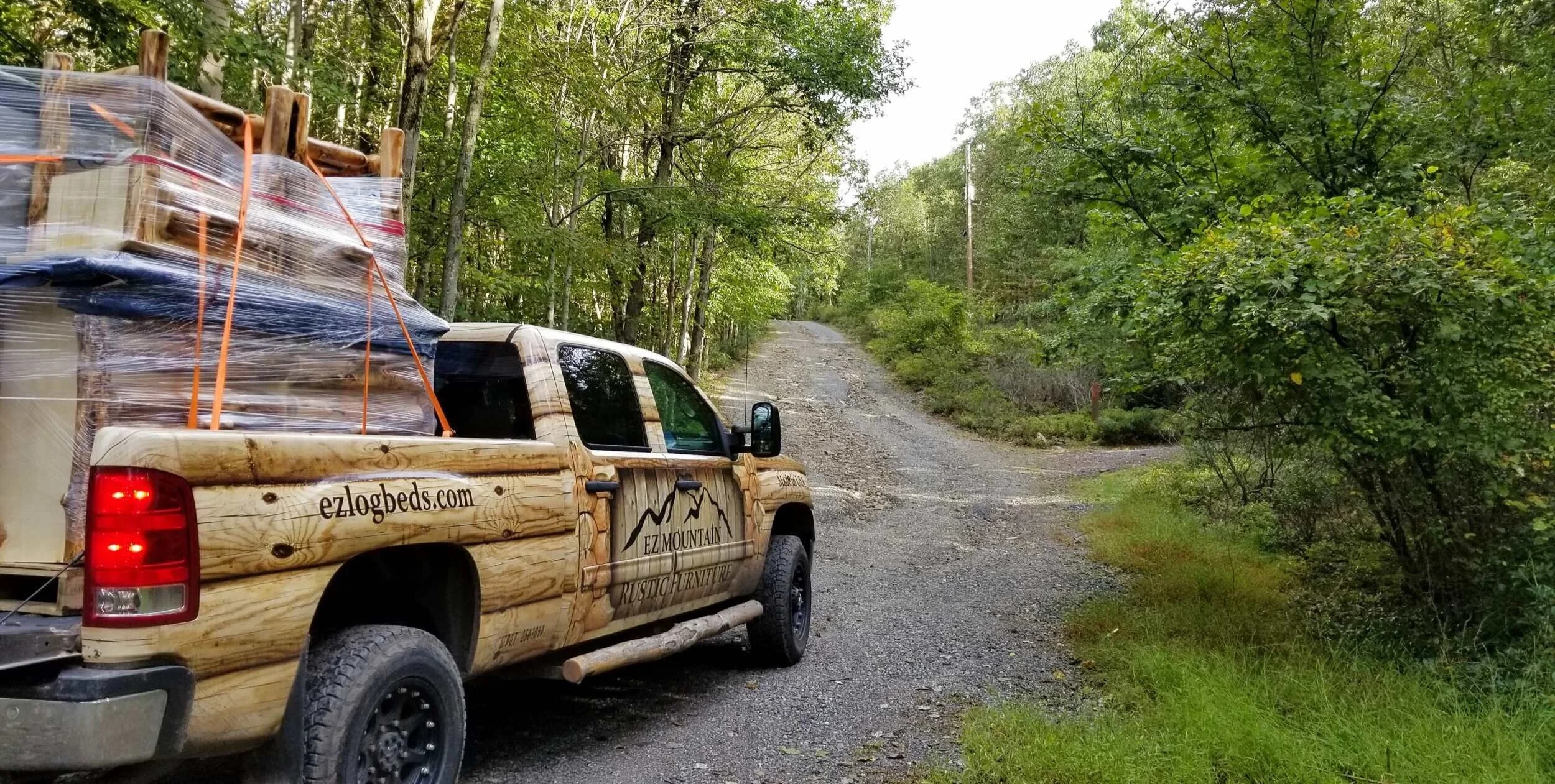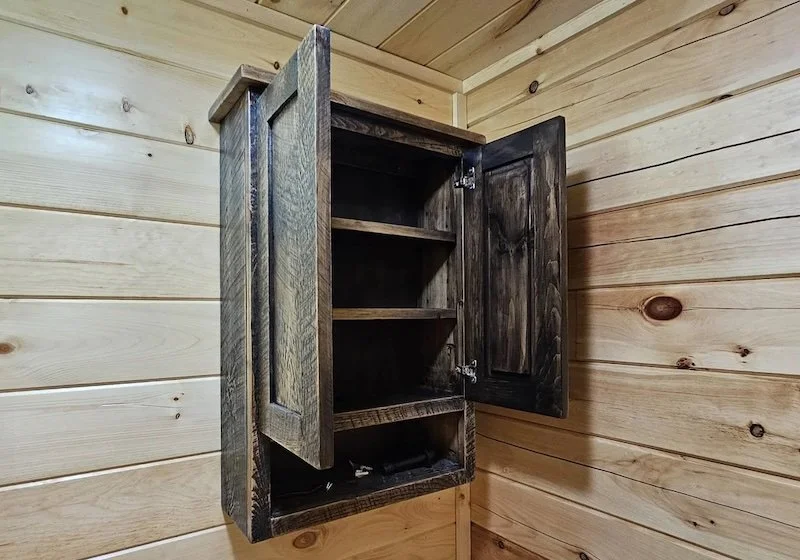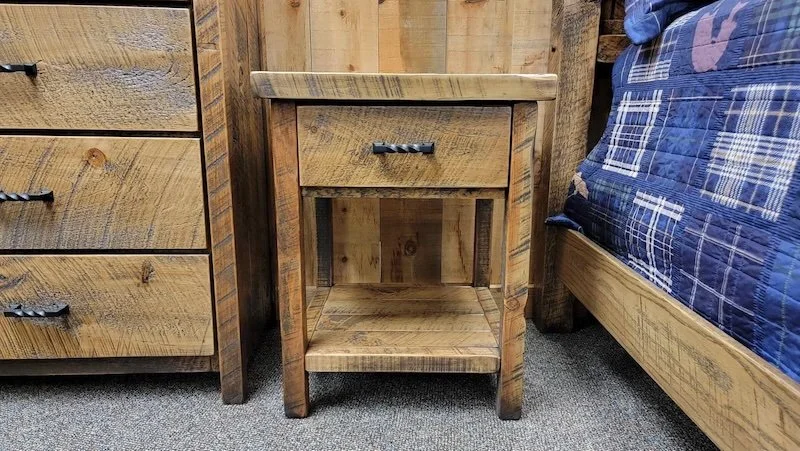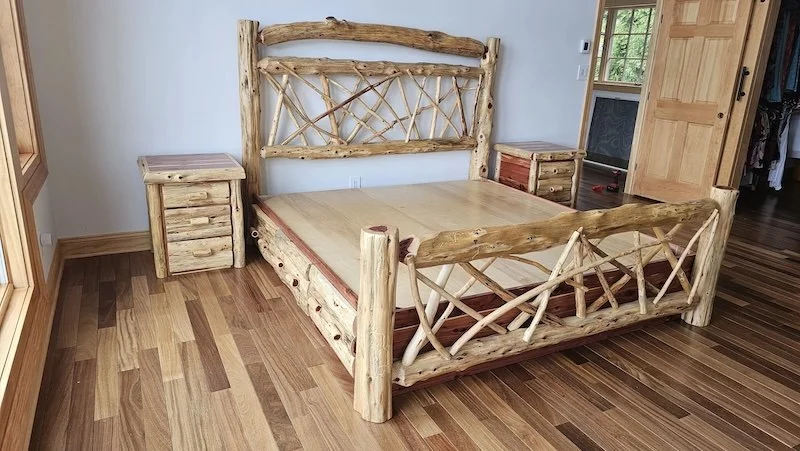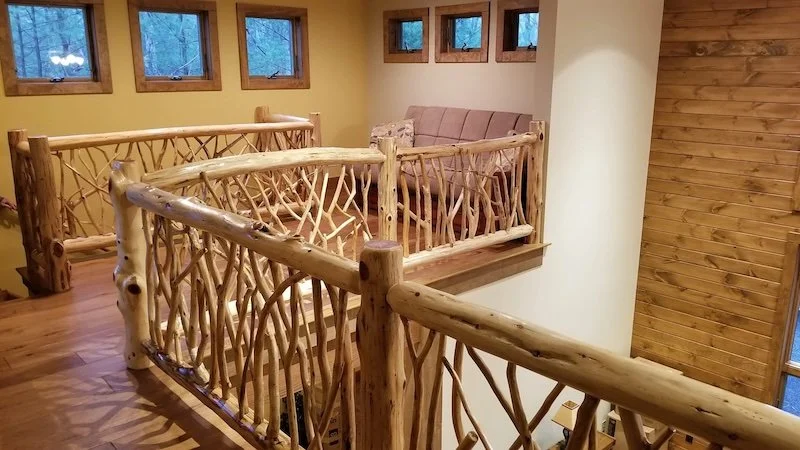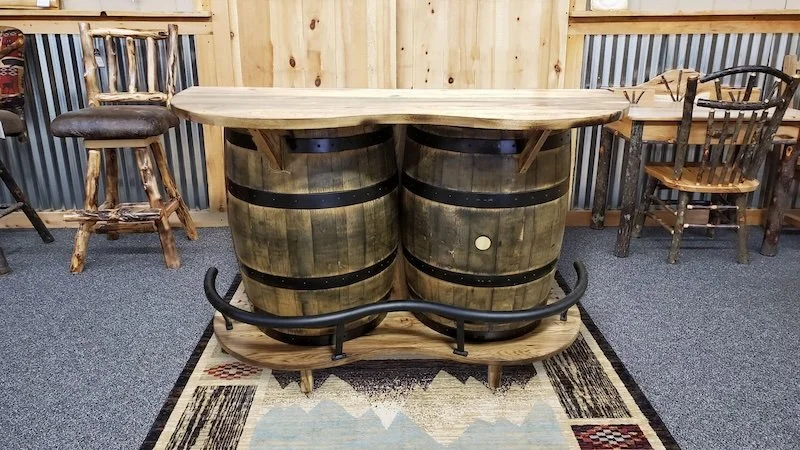Understanding Cracks in Log Furniture
Every so often we receive a phone call or an email about finding a crack on a piece of our log furniture. Understandably, the customer is concerned that they were given a defective product and are worried about the log falling apart. The question is, is this normal? The short answer is cracks are normal for logs, slabs, and barnwood furniture. Read on for more information.
The Drying Process
When a living tree is cut down it is considered to be “green”. Green is just a simple way to say that the tree has a high moisture content, way too high to build a house or make furniture. Because all wood starts this way it is necessary to dry the wood to a lower moisture content, between 6% and 12%. After a tree is cut down it begins to dry naturally due to the roots being severed and its water source cut off, but to get down to the proper level for woodworking it needs to be kiln-dried. Kiln drying is the process of slowly heating the lumber for a long period of time to speed up the drying process, otherwise, you’d have to wait over 5 years for the wood to be even close to 12%.
Cracks are normal in log furniture
When it comes to drying logs this results in the wood “checking”, known informally as cracking. This occurs because the outside of the log dries more rapidly than the core of the log. As a portion of the log begins to dry it also begins to shrink, causing the wood to split, or check. The larger the diameter of the log the more prone it will be to check as it is dried. The good news is most checks stop at the center of the log and go no further, so you don’t need to worry about the log falling apart over time. This doesn’t mean that every log will check to the same degree but merely that you shouldn't be surprised if you find a few cracks on a log. There are many other factors that contribute to checking besides being dried in a kiln. For instance, the wood species, starting moisture level, temperature and humidity level of the storage location, air-flow, and exposure to direct sunlight all play a role as well.
All this to say that cracks are a normal part of log furniture, they are not a defect or reason for concern. Below are some examples of checking on some of our beds and benches.
Tabletops
Even though cracks are normal in logs, they are not considered normal on solid surfaces such as tabletops, with the exception of reclaimed Barnwood tables and Slab tables. Standard table tops are made from many smaller boards that are glued together to form a solid panel. Wood moves, or expands and contracts, across the grain far more than with the grain (across the width of the board, not the length of the board). This means that the wider a board is, the more prone it is to warping and twisting. This is why most of our furniture is made from individual boards that are glued together; It creates a more stable piece. We only use lumber that is properly dried and rarely have problems with cracking, but from time to time, an item will crack over time. This is usually due to the conditions of the room where the piece is located, and does not qualify for warranty service or replacement beyond the first year. For example, we have a large number of customers who buy our furniture for their second homes, which they only heat or cool when they are present. This means that the humidity level and temperature level in the house are constantly shifting. This type of shift in temperature and humidity causes the wood to expand and contract more severely than it would under normal conditions and often results in cracking. Below are examples of standard tops.
Slab Tables
Slabs, unlike standard table tops which are made from glued-up panels, are similar to logs. Because a slab is a giant slice of a tree, usually 2” thick or more, it is more prone to expanding and contracting, warping and twisting. As mentioned above, the wider a board the more movement you should expect out of it. This is the primary reason why slabs are thicker than the standard panels we use for the tops of our furniture. The thicker the slab the more stable it is, and the less prone it will be to warp and twist. That being said, there is no guarantee that a slab won’t crack or warp in the future, especially if your house isn’t heated and cooled all year round.
Ideally, we recommend keeping the humidity and temperature steady year-round. Air conditioning in the summer, and using a humidifier in the winter usually keeps the humidity to the proper levels. Many of our slab products begin with cracks and we leave them unfilled from the start. These cracks aren’t a defect, but a feature. If the cracks are large enough or are deemed to be a structural issue we fill them with epoxy. Knots, dents, and imperfections of all kinds are to be expected on any of our slab products.
We stand behind our products but claim no responsibility for a table that cracks due to the environment it has been subjected to, or damage due to neglect, or abuse. If you have a tabletop that has cracked there are two options. The first option is to fill the crack with wood putty, which can be found at most home centers such as Lowes. The second option is to have the crack filled with epoxy. Epoxy is more durable and can be either clear or colored, but usually requires that the entire tabletop be refinished and is more costly than using wood putty. As always, if you have any issues with our furniture give us a call or shoot us an email, we’re happy to help.











